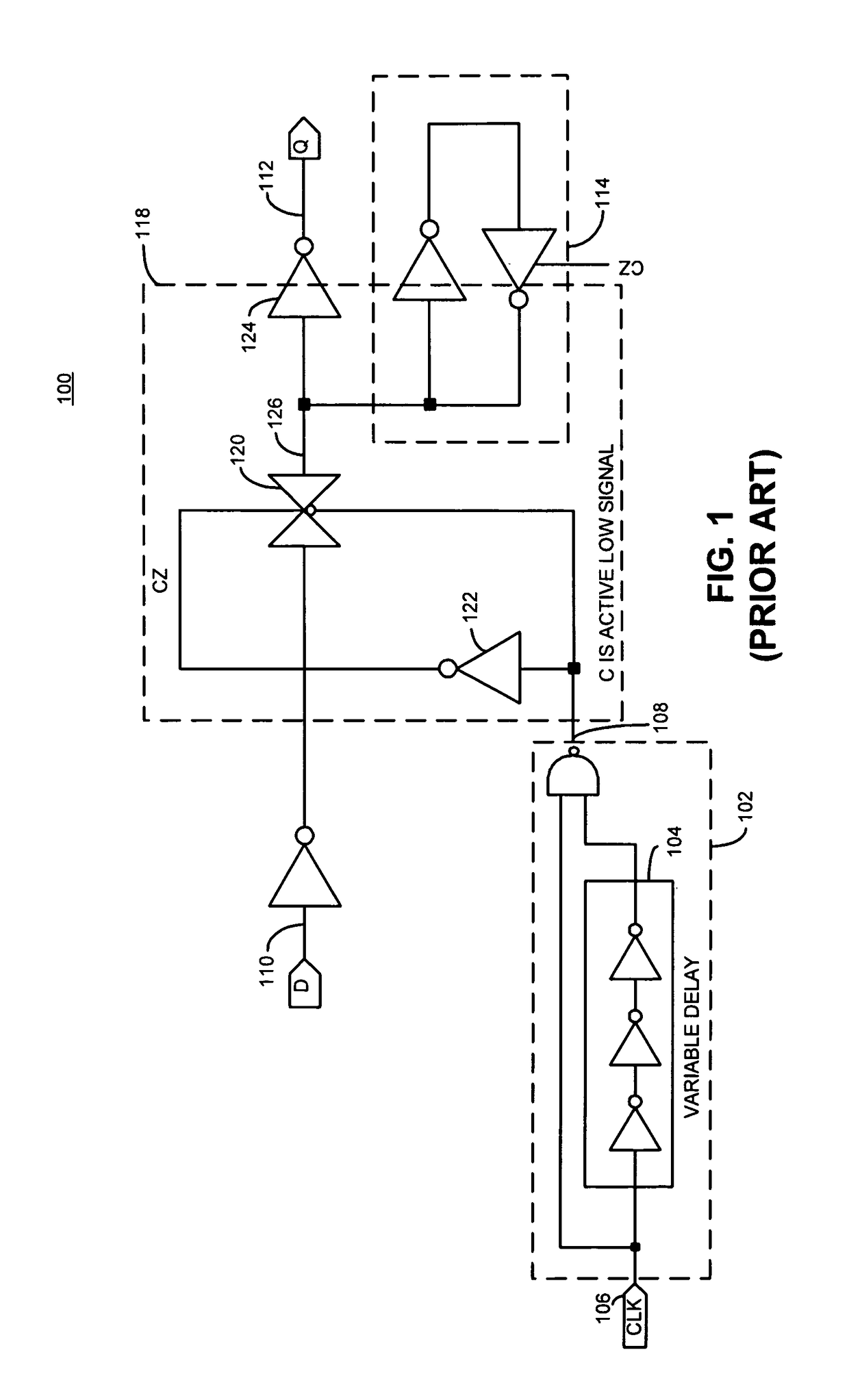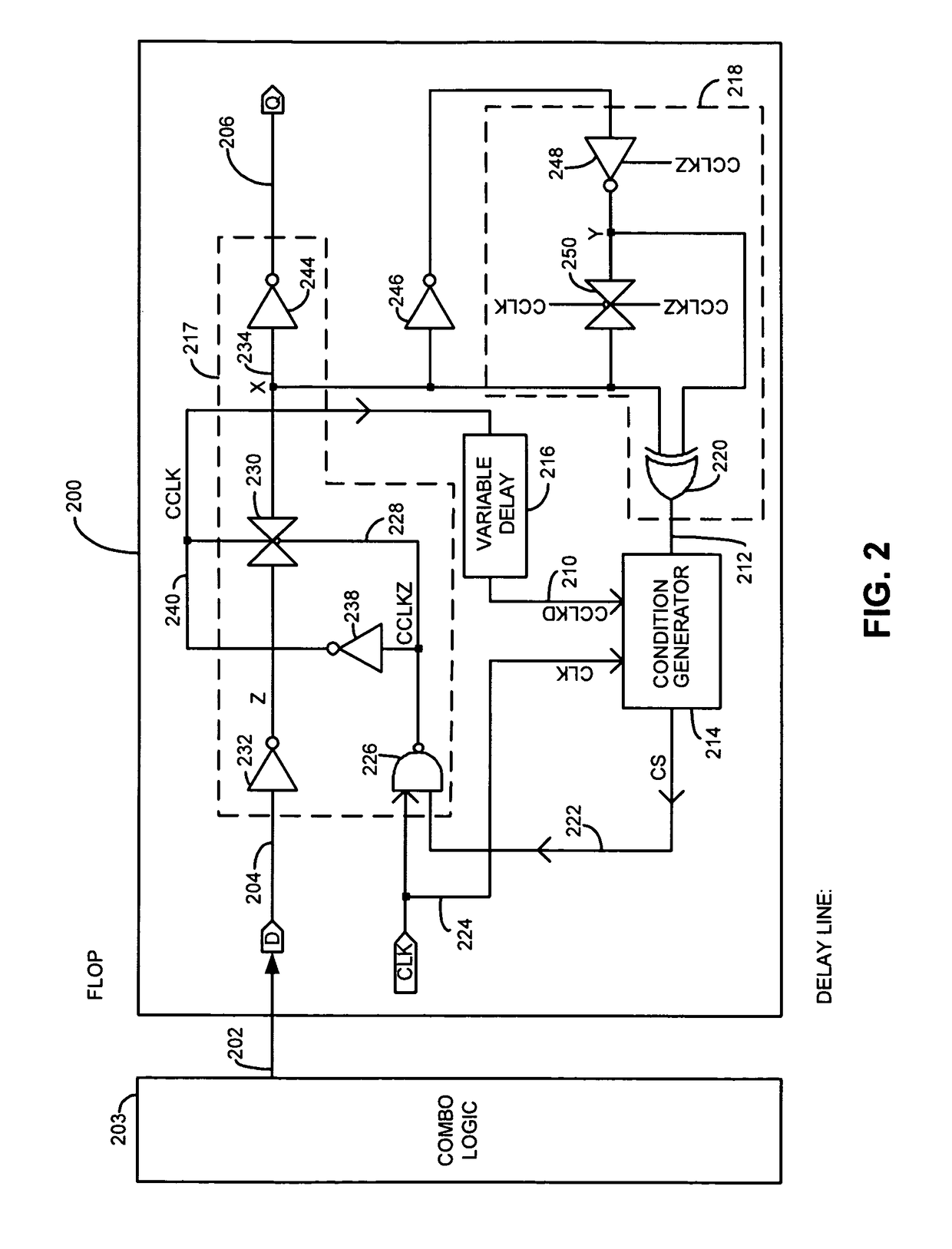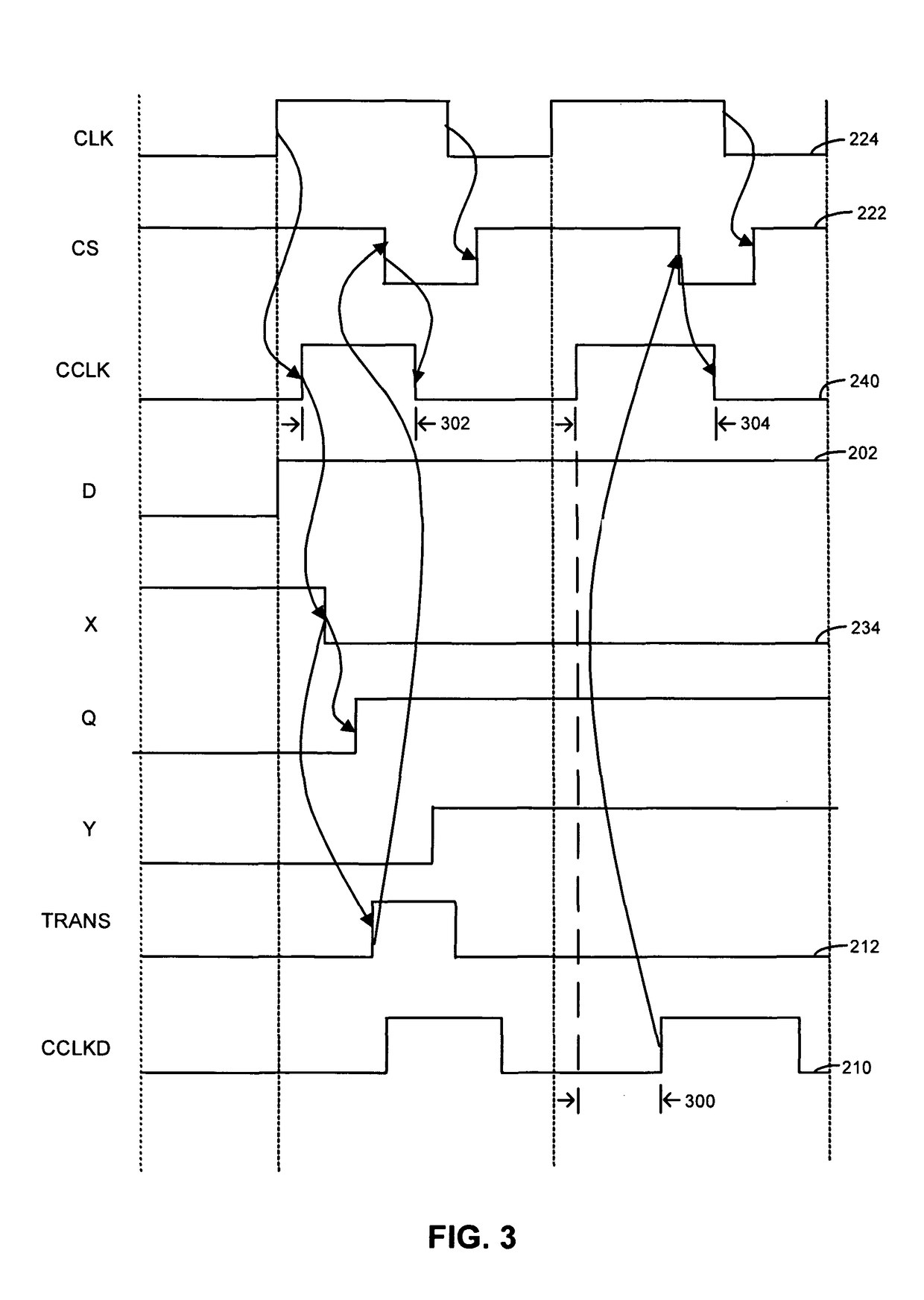Sequential circuit with dynamic pulse width control
a pulse width control and sequence circuit technology, applied in the field of pulse width control pulse latch circuits, can solve the problems of increasing or varying the hold time required for a latch to latch the incoming data from combinational logic, increasing or varying the process variation of the manufacturing process, and increasing the width of the pulse or strob
- Summary
- Abstract
- Description
- Claims
- Application Information
AI Technical Summary
Problems solved by technology
Method used
Image
Examples
Embodiment Construction
[0013]Generally, a pulsed latch circuit with conditional shutoff prevents an input node, such as a node receiving data, of the pulsed latch circuit, from latching data based on a delayed input control signal, such as an internal clocking signal, and based on a feedback latch state transition detection signal indicating that a current state of input data is stored in the latch. As such, two control conditions are used to shut down the latch. In one example, a condition generator detects when the latch has captured data correctly and outputs a signal to disable the input node. In addition, a variable delay circuit is used to adjust the width of the allowable input signal to set a worst case shutoff time. If data is latched early, a feedback latch state transition detection signal causes the input node to be disabled. If data is not latched early, the maximum allowable latch time is set by the variable delay circuit.
[0014]Stated another way, the condition generator logic disables the i...
PUM
 Login to view more
Login to view more Abstract
Description
Claims
Application Information
 Login to view more
Login to view more - R&D Engineer
- R&D Manager
- IP Professional
- Industry Leading Data Capabilities
- Powerful AI technology
- Patent DNA Extraction
Browse by: Latest US Patents, China's latest patents, Technical Efficacy Thesaurus, Application Domain, Technology Topic.
© 2024 PatSnap. All rights reserved.Legal|Privacy policy|Modern Slavery Act Transparency Statement|Sitemap



